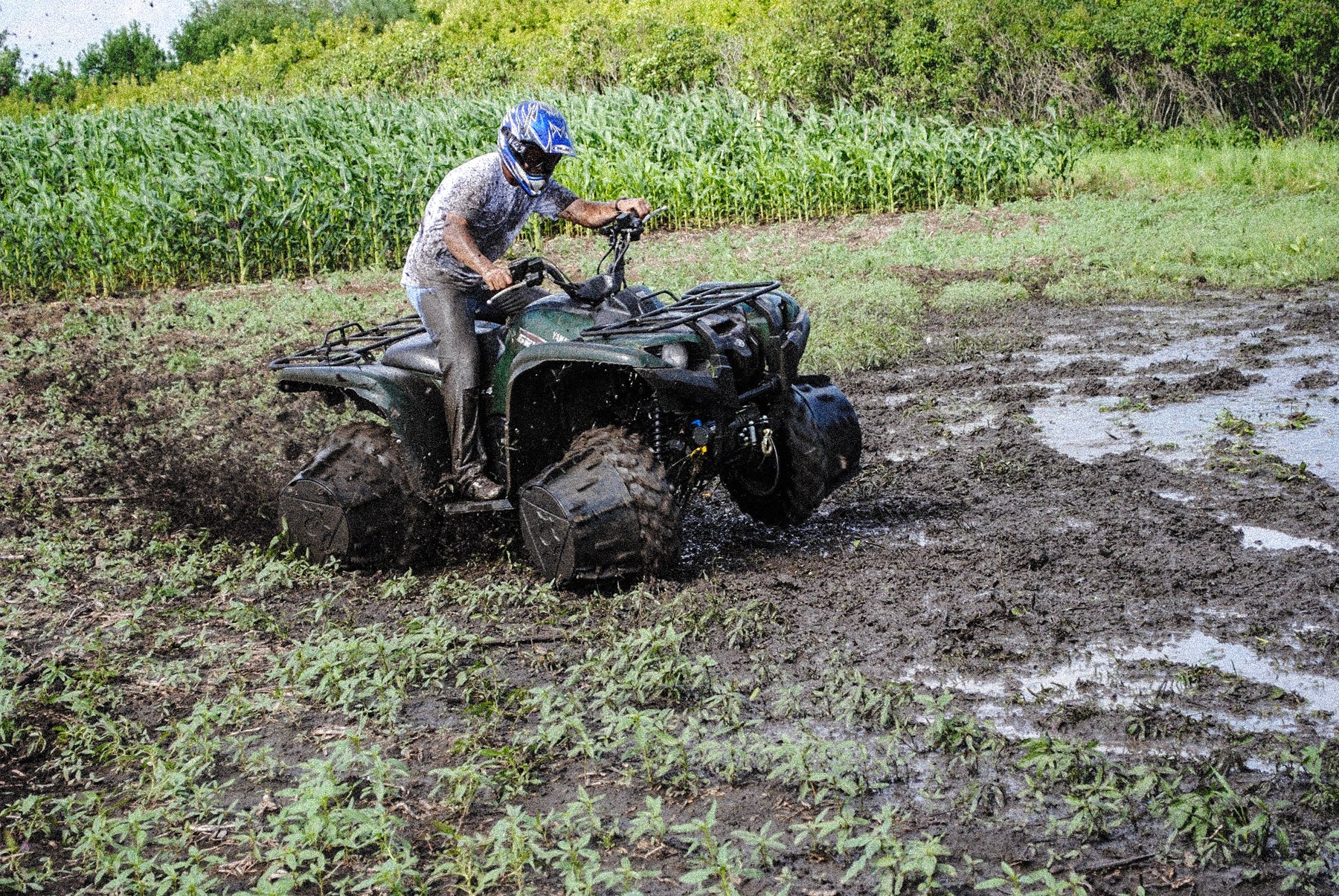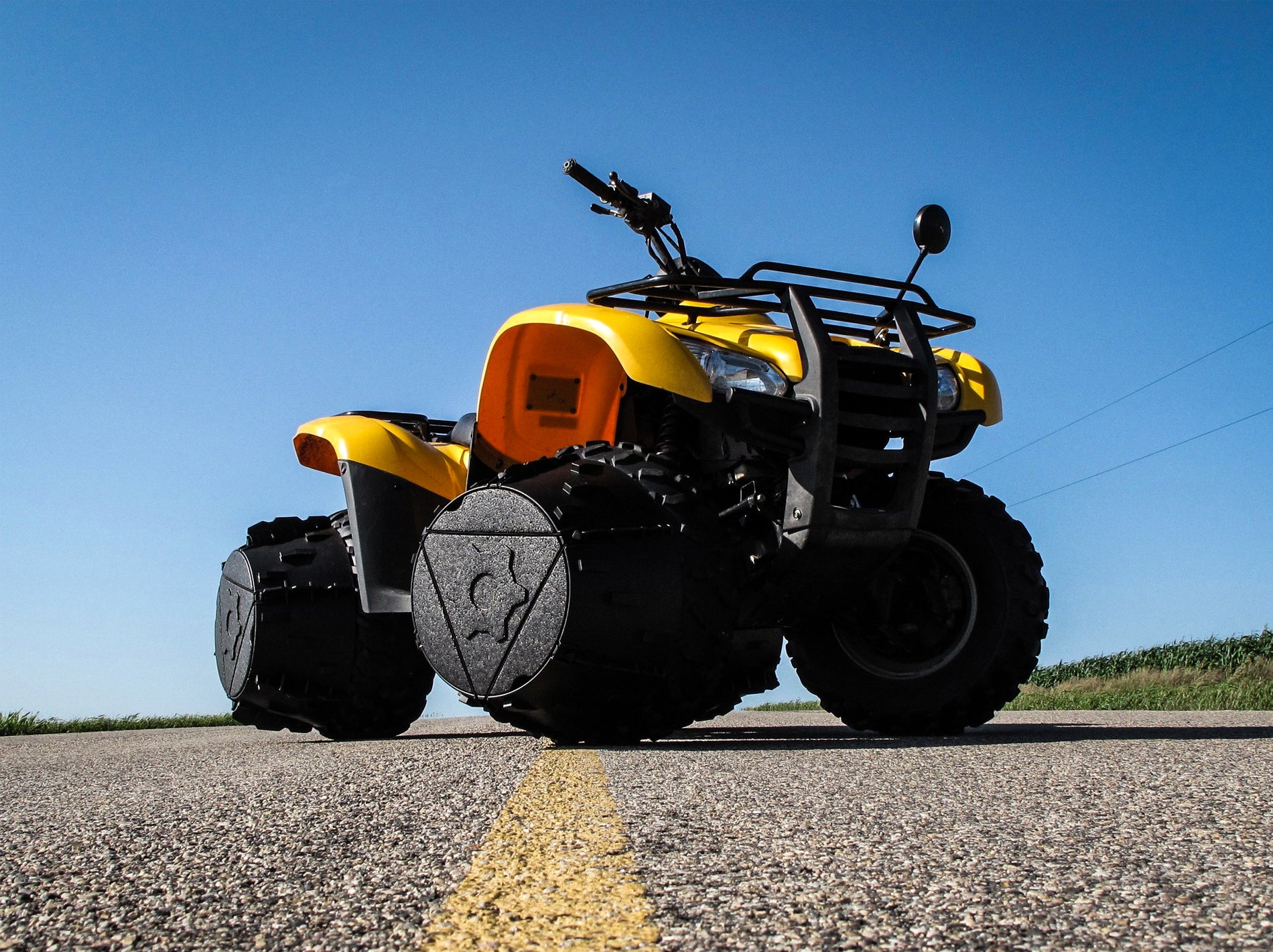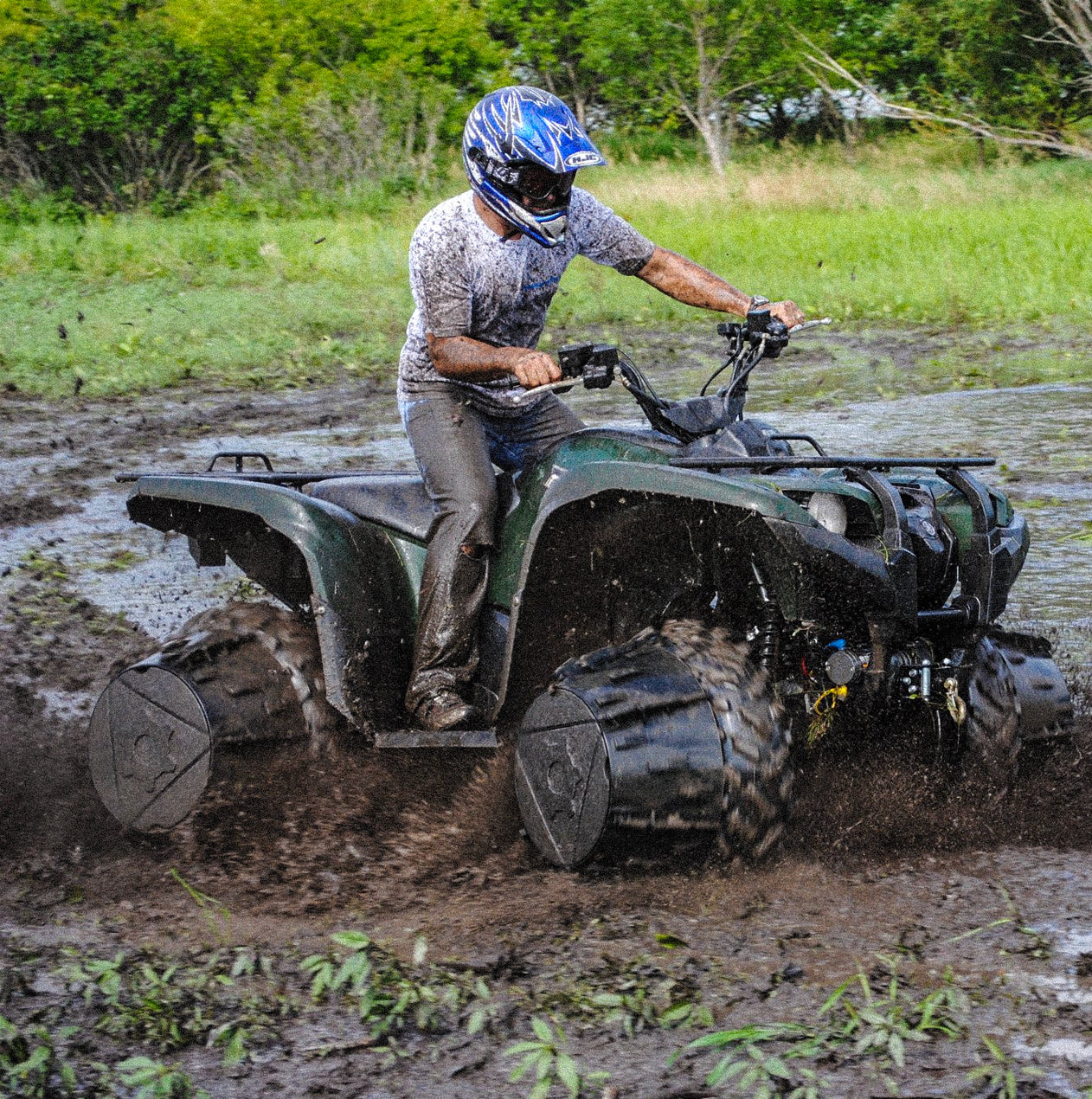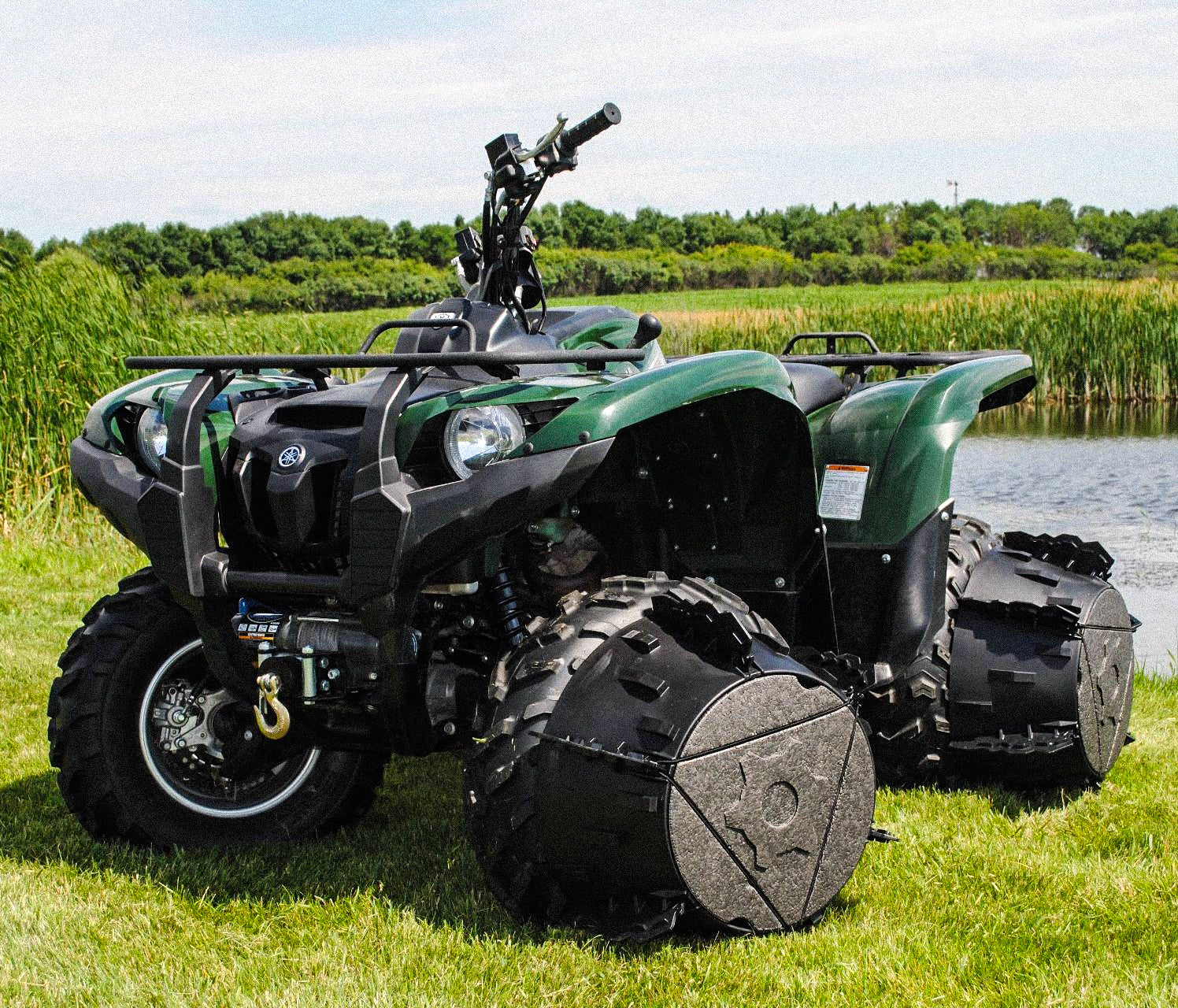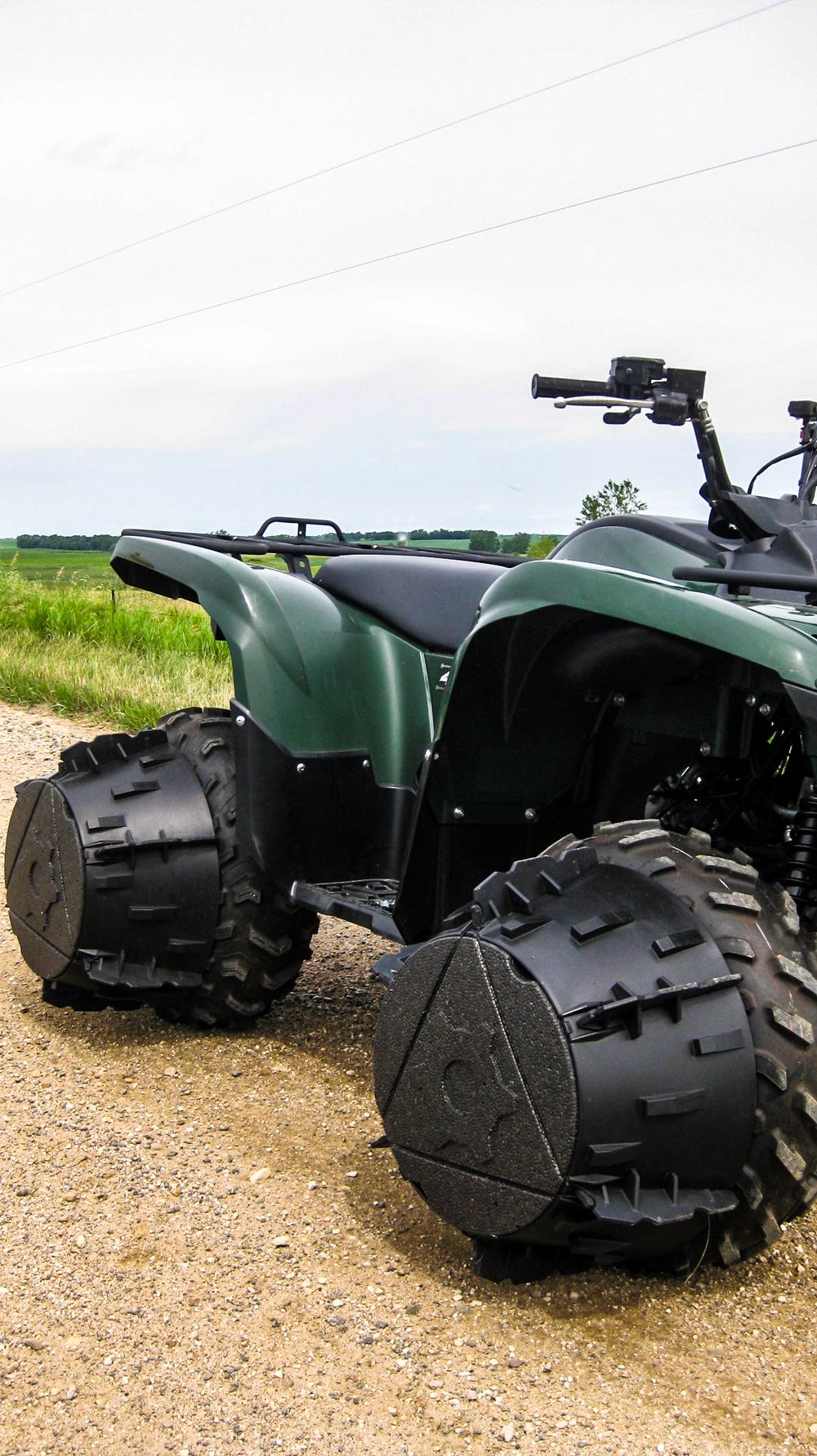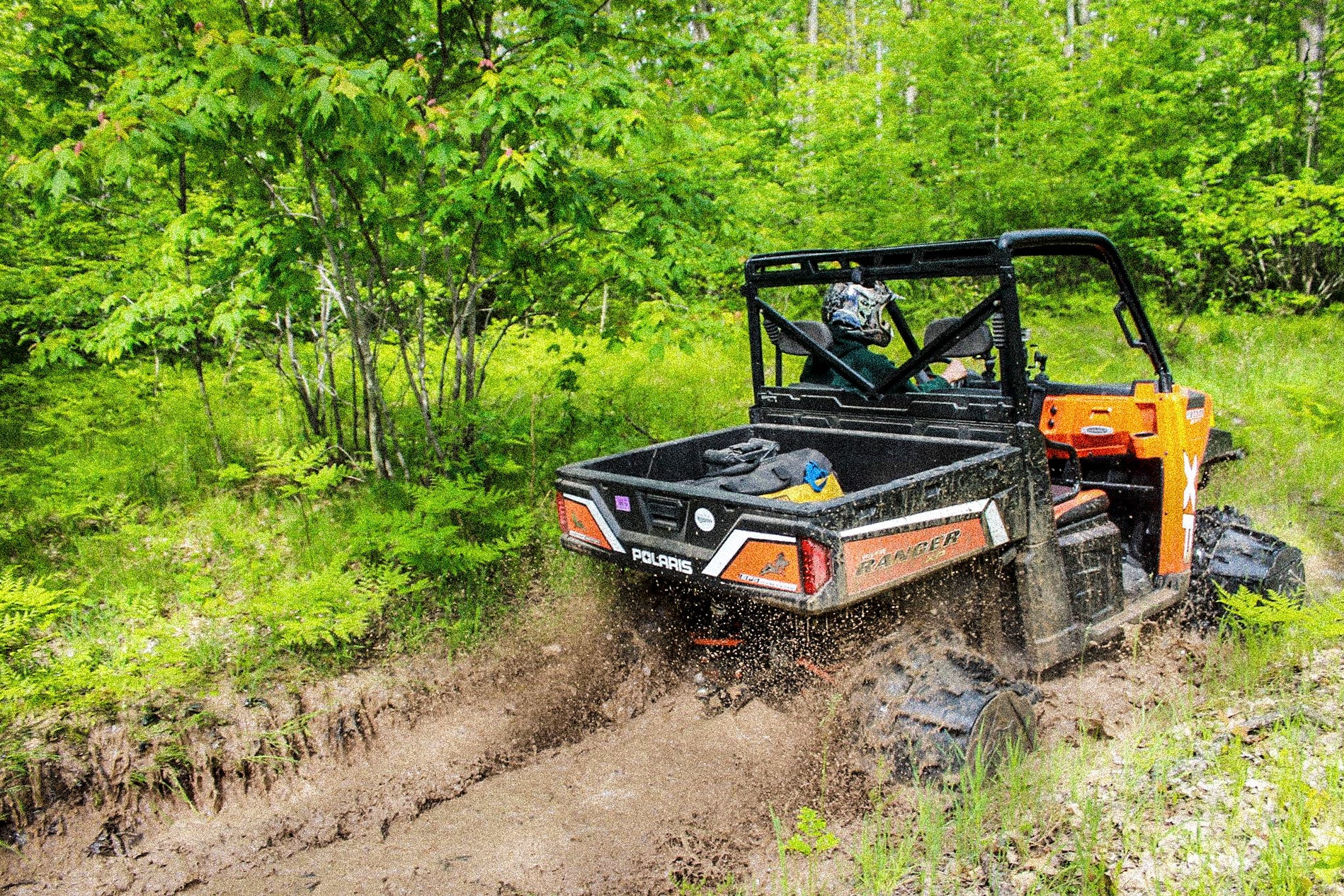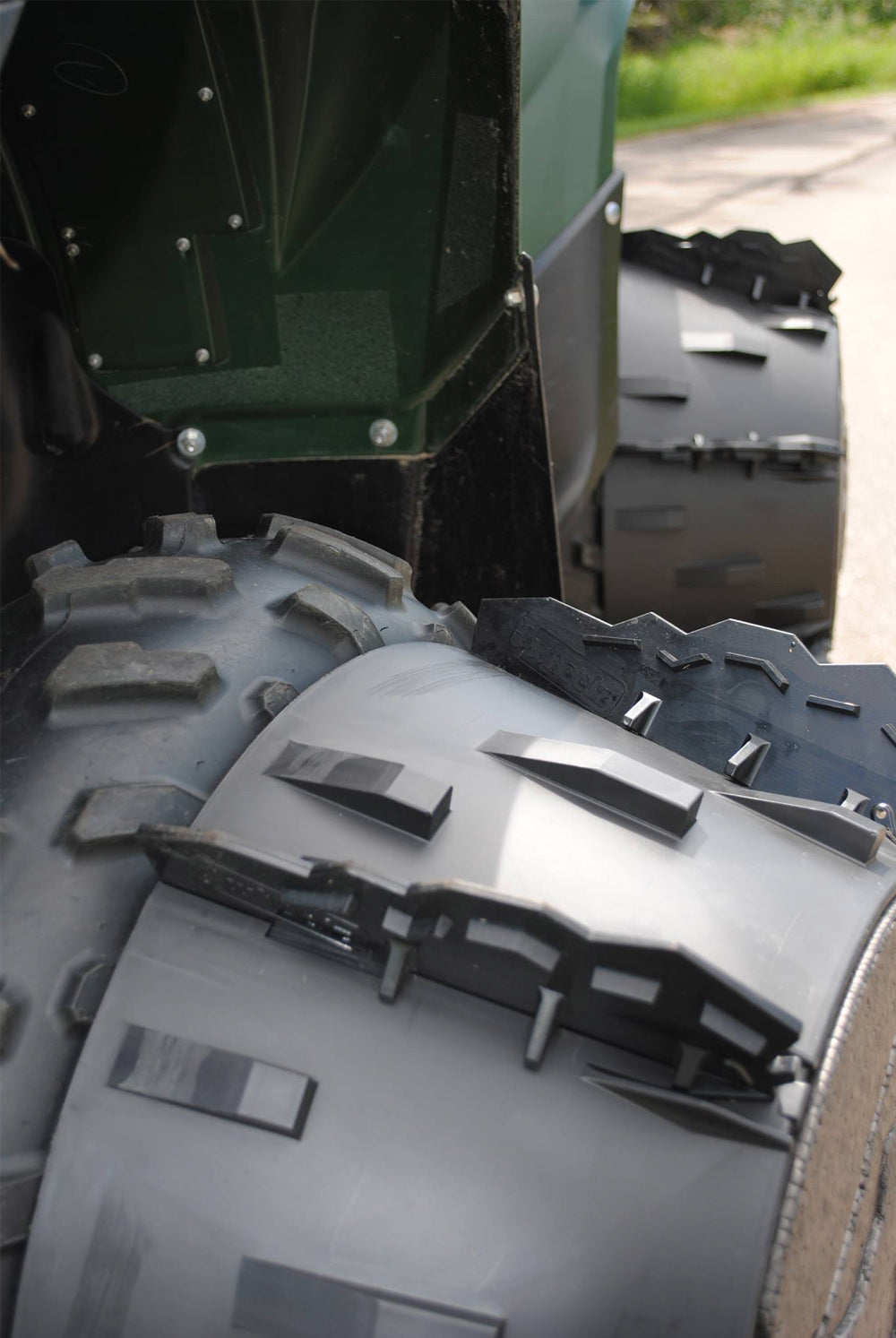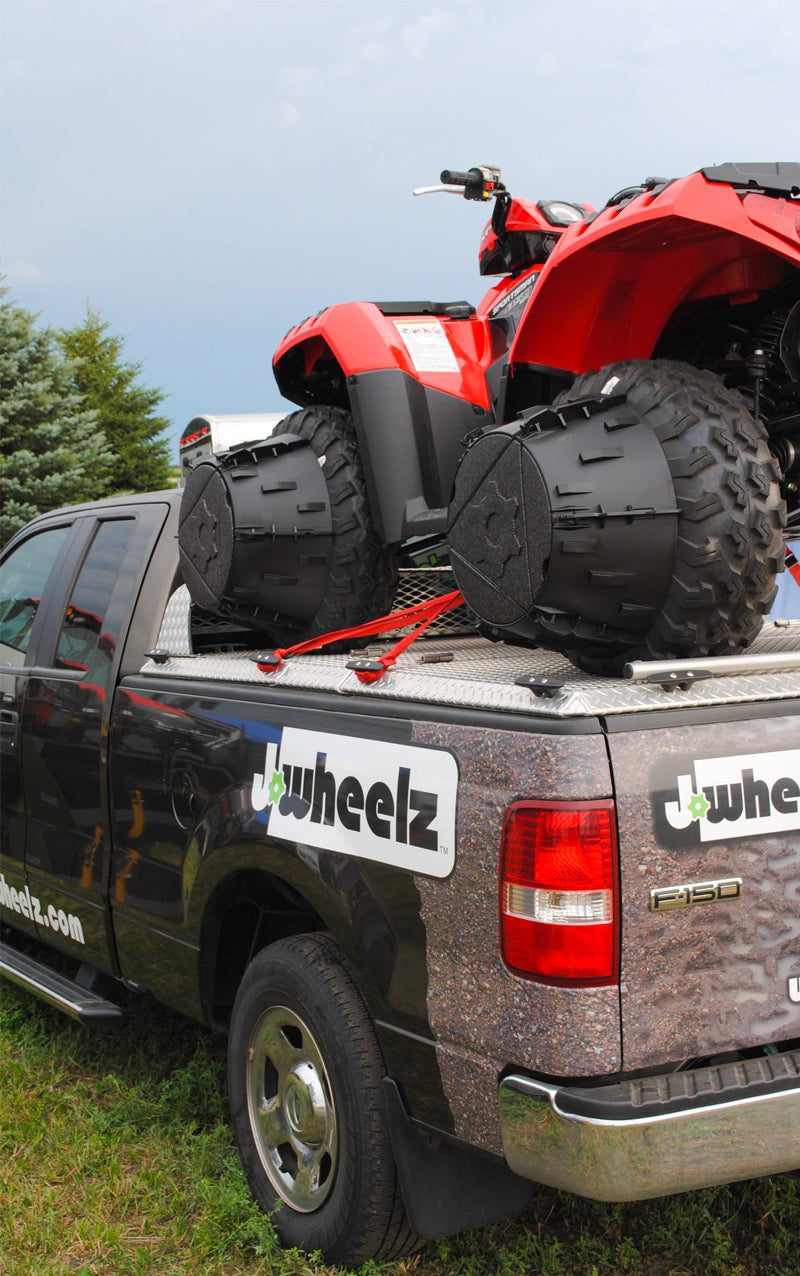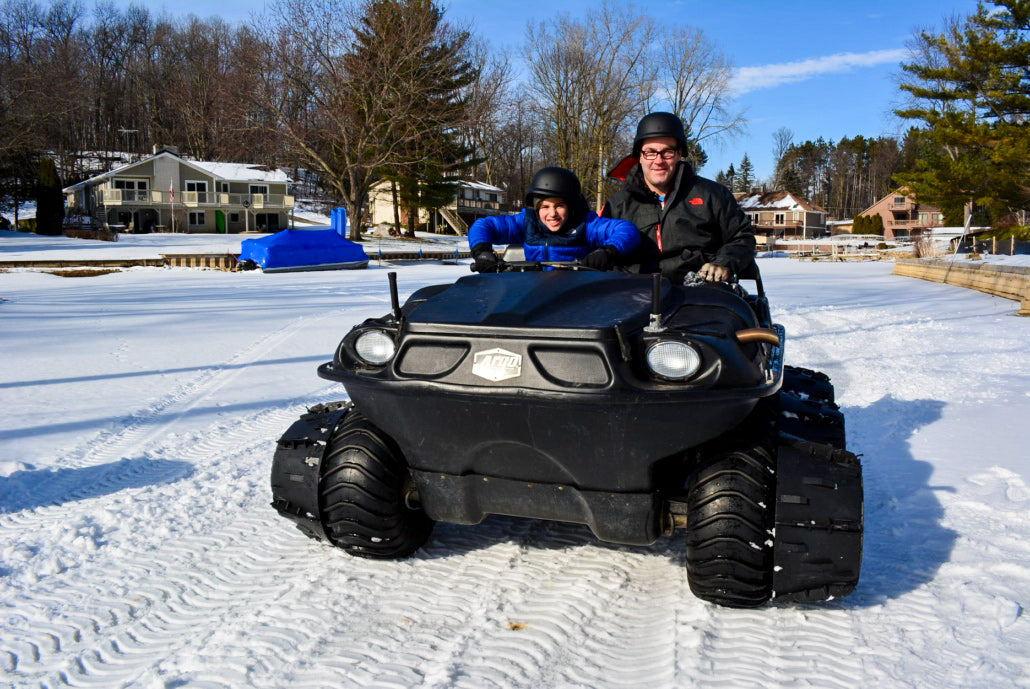Blade size should be selected in a way that does NOT allow the blades to touch the ground on a firm, flat surface. Generally speaking, 24”-27” tires should take standard blades. Tires over 27” can use the tall blades.
You will need a drill, a ½” drill bit (we recommend a spade drill), a way to mark the plastic (we prefer a silver “Sharpie” type marker), ¾” socket, ratchet, and crowsfoot (or installation tool).
The first time you install J-Wheelz, you will likely take about 1-2 hours. After initial install, it will take about 15-20 minutes. Removal will take about 15-20 minutes.
A single J-Wheelz part is 10” wide. A set of J-Wheelz may add up to 20” to the width of your machine.
J-Wheelz works on tires 24” and larger. While they can be bolted onto machines with over 30” tires, it becomes less effective for snow and mud. It can still add buoyancy, but likely will not add enough traction to be effective.
We do not recommend using J-Wheelz with tires/wheels that have tracks installed. Some people choose to run J-Wheelz on some tires and tracks on others, like Alaska Bush Tracks, often are on the rear wheels and will run our product on the front.
We have tried to minimize our packaging, our current box dimensions for our full set of 4 is 40”x21”x20”. While it does weigh under 50lbs, it is a large box.
We receive lots of questions about floatation with J-wheelz. J-wheelz do add floatation to your ATV and may float the machine by itself, but they were never intended to float the driver while operating the vehicle or to drive across deep water. We recommend that you avoid deep water or crossing bodies of water with your ATV. ATVs do not have adequate safety equipment or floatation devices for deep water applications.
If you are still curious, here is some information to help you better understand floatation:
The amount of floatation or buoyancy produced by any object submersed in water is equal to the amount of water displaced by the object (This is known as Archimedes Principle). 1 cubic foot of water weighs roughly 62 pounds. Now for an example, if you wanted to have 1000 lbs of buoyancy. 1000/62 = 16.13 cubic feet. So in order to achieve 1000 pounds of buoyancy in water you would need to displace roughly 16 cubic feet of water.
The average utility ATV tire displaces between 1.2 and 1.6 cubic feet per wheel which yields between 72 and 96 pounds of buoyancy per tire and between 298 and 397 pounds of buoyancy for all four tires.
A single J-wheelz attachment (including the floatation insert) displaces about 1.25 cubic feet. So a set of four J-wheelz adds 5 cubic feet of displacement or 310 pounds of buoyancy.
Another factor is that when an ATV is partially submersed in water, some of the metal and other components of the vehicle are displacing water as well. This is where it gets tricky. There is not a practical method to measure this amount of buoyancy. We have no idea what your machine weighs; therefore, we recommend you weigh your machine using a truck scale to determine its weight.
Most ATVs/UTVs were not designed to be submerged and can be damaged by the introduction of water.

